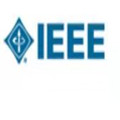This study investigates the relationships which deep learning methods can identify between the input and output data. As a case study, rainfall-runoff modeling in a snow-dominated watershed by means of a long- and short-term memory (LSTM) network is selected. Daily precipitation and mean air temperature were used as model input to estimate daily flow discharge. After model training and verification, two experimental simulations were conducted with hypothetical inputs instead of observed meteorological data to clarify the response of the trained model to the inputs. The first numerical experiment showed that even without input precipitation, the trained model generated flow discharge, particularly winter low flow and high flow during the snow-melting period. The effects of warmer and colder conditions on the flow discharge were also replicated by the trained model without precipitation. Additionally, the model reflected only 17-39% of the total precipitation mass during the snow accumulation period in the total annual flow discharge, revealing a strong lack of water mass conservation. The results of this study indicated that a deep learning method may not properly learn the explicit physical relationships between input and target variables, although they are still capable of maintaining strong goodness-of-fit results.
翻译:这项研究调查了深层学习方法能够确定投入和产出数据之间的关系。作为案例研究,选择了通过长期和短期内存(LSTM)网络在以雪为主的流域进行降雨流出模型。每日降水和平均气温作为模型投入用于估计每日流量排放。在模型培训和核实之后,进行了两次实验模拟,用假设投入而不是观测到的气象数据来澄清经过培训的模型对投入的反应。第一次数字实验表明,即使没有投入降水,经过培训的模型也产生了流量排放,特别是冬季低流量和高流量。经过培训的模型也复制了暖和冷条件对流量排放的影响,而没有降水。此外,模型只反映了全年流量排放积雪期间总降水量的17-39%,表明严重缺乏水质量保护。这项研究的结果表明,深学习方法可能无法正确了解投入与目标变量之间的明显物理关系,尽管它们仍然能够保持强大的良好结果。




